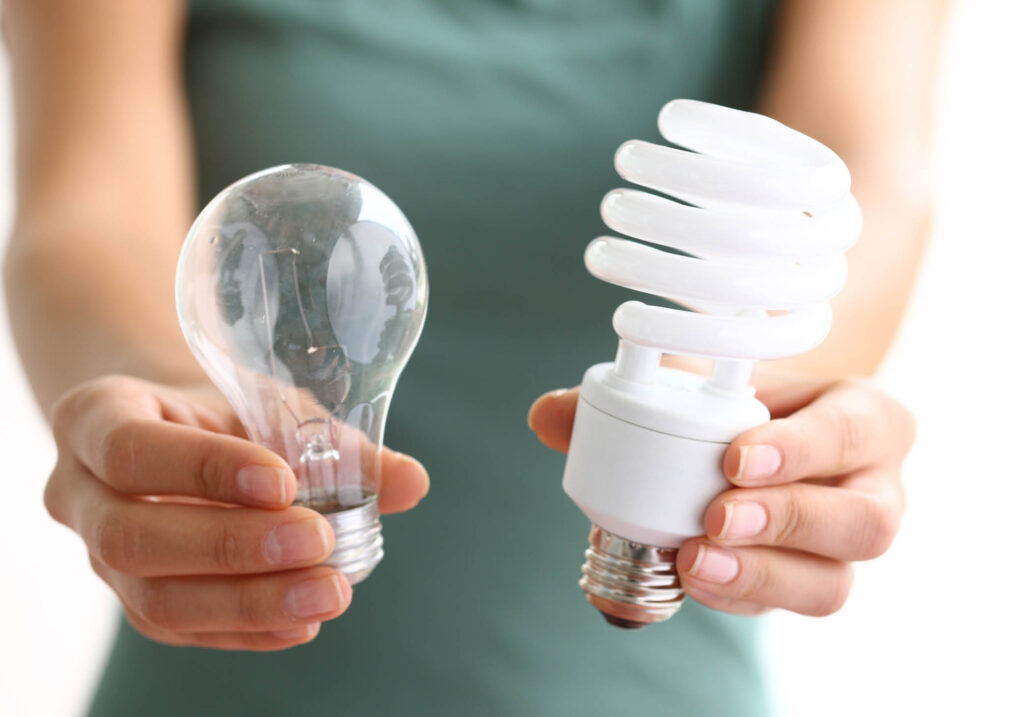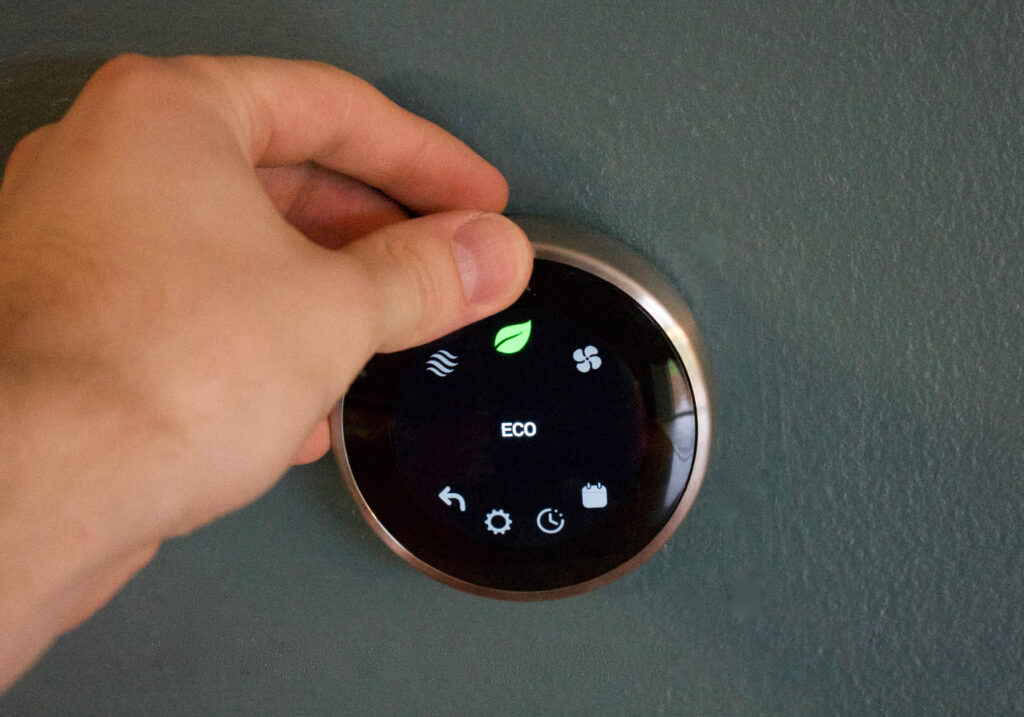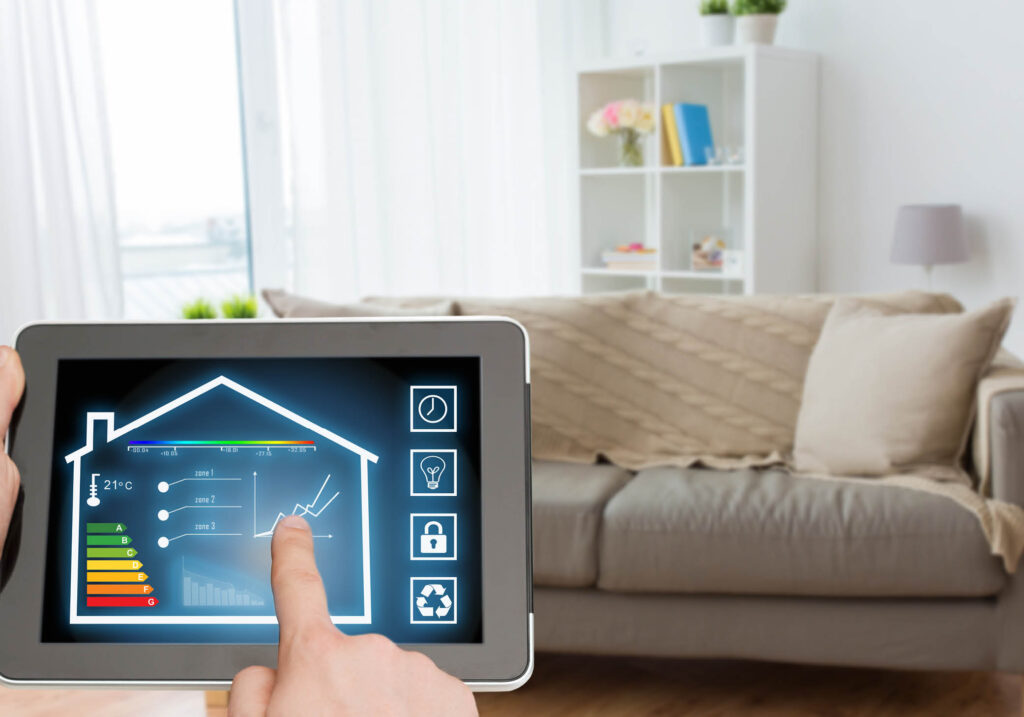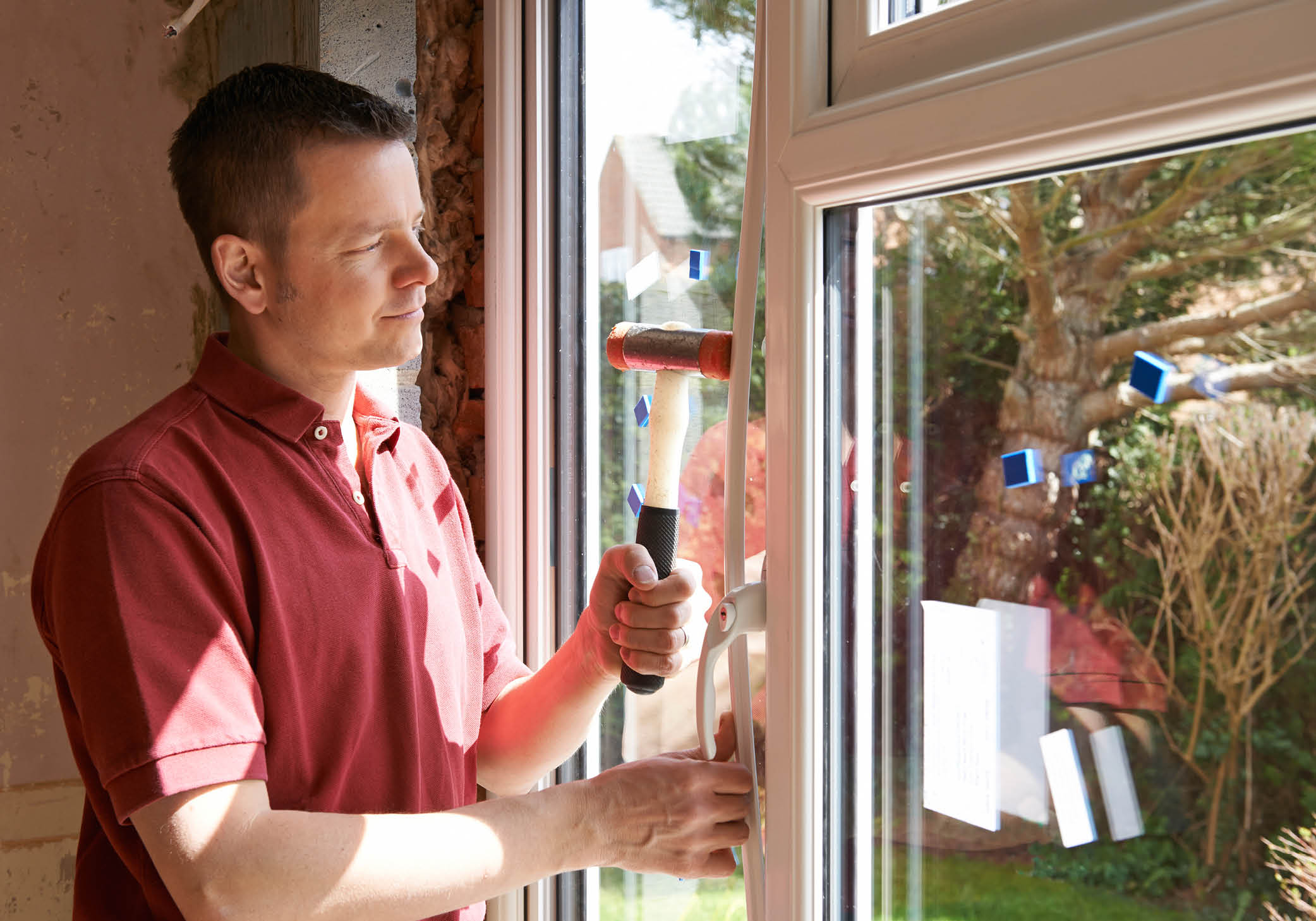Energy-efficient home improvements, even small changes, can lead to a more sustainable home and significant cost savings. From budget-friendly window coverings to additional insulation or new appliances, a range of options are available and can make a real difference in your home’s energy consumption. Below, we reveal some of our favorite tips for creating a more energy-efficient home.
 Use More Energy-Efficient Light Bulbs
Use More Energy-Efficient Light Bulbs
There has been a widespread movement toward swapping incandescent light bulbs for LED versions. This quick fix allows you to immediately make your home more energy-efficient, as the new LED light bulbs “use up to 90% less energy and last up to 25 times longer than traditional incandescent bulbs,” according to the experts at Better Homes & Gardens. As a bonus, the longer-lasting bulbs will save you cash over time in replacement costs. You may also want to audit your overhead lighting and table lamps. Not all areas of your home require bulbs boasting the same wattage. Changing a brighter bulb for a more intimate glow where it is effective can also yield noticeable energy savings.
Apply Low-Emissivity Film to Windows
While many new windows have embedded coatings to help protect against the heat and ultraviolet rays that flow into the home, older ones rarely have this feature. Enter low-E film. As The Spruce explains: “Low-E films usually contain metal or metal oxide as the material that counteracts the UV rays.” In addition, the Magazine reports: “Manufacturers often state that low-E films reflect between 70- and 80-percent of solar heat gain in the summer or conserve over 50-percent of interior heat in the winter.” And because it reduces the amount of UV light that comes into your home, the product eases the amount of sun damage to your artwork, furniture, and rugs. This coated plastic film is easy to apply. It’s available in rolls and can be cut to fit your windows, no matter their shape. It’s a quick way to create a more energy-efficient home without the higher cost of installing new double-paned windows.
Wash Laundry in Cold Water
Washing laundry in cold water may seem like it goes against all of our early teachings, especially when cleaning white fabrics. But many detergents are now formulated for cold water loads. Merely turning the setting to cold takes seconds, but it yields measurable savings, as “up to 90 percent of energy spent on washing goes towards heating the water,” according to the pros at Real Simple. As for drying your clothing, if you live in an area like Southern California that rarely sees rain, consider hanging your clothes outside to line dry. You can also set up line drying systems inside your utility room or an airy room in your apartment. If that isn’t feasible, ensure that your dryer has a full load before hitting start.
Lower the Water Temperature
Check your water heater’s thermostat. As Better Homes & Gardens explains, “most water heaters are set much too high at 140 degrees Fahrenheit.” If this is the case, consider lowering the temperature by 20 to 30 degrees. The Magazine reassures that even with this change, “the water will still be comfortable.” And you’ll see the savings in terms of the amount of energy needed to run the unit and in your pocketbook, whether you use gas or electric to power your water heater.
 Set a Programmable Thermostat
Set a Programmable Thermostat
Speaking of thermostats, adjusting your home’s programmable thermostat is another quick and effective way to achieve a more energy-efficient home. This easy fix isn’t just about raising your home’s cooling system a few degrees or lowering your heat in the winter. Better Homes & Gardens applauds the fact that programmable thermostats allow “you to set times for the air-conditioner or furnace to run and won’t waste energy on an empty house.” The Magazine also loves that this small change can “save about 10% on your energy bill.”
Monitor Your Refrigerator
Minor adjustments to your refrigerator or freezer can help you along the way to a more energy-efficient home. Start monitoring your refrigerator and freezer settings to ensure that you aren’t keeping the settings too cold. Real Simple reveals: “Recommended temperatures are 35° to 38°F for the fresh food compartment and 0°F for freezers—anything colder means wasted energy.” How you store your leftovers may be critical to how your refrigerator operates. According to the Magazine, just covering liquids and wrapping up leftover foods will give your compressor a break. When left uncovered, food and beverages can release moisture that may force your compressor to work harder than necessary. Lastly, check to be sure that your refrigerator and freezer doors seal tightly. If not, replacing the seal is an affordable way to get your refrigerator running optimally.
Seal the Gaps
The average house or apartment loses considerable heat or air conditioning through gaps around windows and doors. In homes, cracks throughout the attic or basement can create air leaks that force your HVAC system to work overtime. Start by applying weather stripping around doors to help create a stronger seal. As a bonus, the weather stripping will dampen sound, so jarring slamming noises also will be cut to a minimum. Add caulking to your windows and any cracks you find.
The experts tell Real Simple that “‘ducts are also a common source of leaks, so have your contractor look for holes, tears, and other signs of leaking ducts and seal them.’” You may want a contractor to check your chimney and plumbing stack for energy drains, as well. These basic changes are not only energy-efficient home upgrades, but they’ll result in a more comfortable home no matter what the season.
Replace Filters and Tune Up Your HVAC
When was the last time your HVAC system was checked by a licensed professional? Has your HVAC filter been in place for more than three months? Better Homes & Gardens cautions that “a dirty filter increases your energy bill and shortens the life of your heating and cooling systems.” You can help by bringing in a professional to check your systems every year to verify that they are working at peak efficiency. Meanwhile, simply washing or replacing your HVAC filter every three months will improve your air quality and extend the life of your system.
Add Eco-Friendly Home Insulation
It’s not unusual for older homes to be under-insulated, which forces your HVAC system to work harder to keep the temperature at a comfortable level for you and your family. Upgrading insulation in the attic floor and inside the walls can go a long way toward creating a more energy-efficient home. With this in mind, the editors at The Spruce began investigating several eco-friendly options that you may want to consider. Fiberglass (aka glass wool), mineral wool, sheep’s wool, polyisocyanurate panels, denim insulation, and cellulose insulation have all gotten high marks from the Magazine’s experts.
 Invest in Energy-Efficient Home Appliances
Invest in Energy-Efficient Home Appliances
Better Homes & Gardens reports: “Major appliances are your home’s third-biggest energy hog, behind heating, cooling, and water heating.” This means that older, inefficient appliances are likely to be pulling too much energy when operating, and your repair bills may be mounting. If you have been thinking about making a change, and have the budget to do so, start reviewing appliances that have an Energy Star label because, as The Spruce reveals, “appliances carrying the Energy Star rating typically are 10 percent to 20 percent more energy efficient than non-rated models.” As there is an array of Energy Star products, review the Energy Guide label for all new large appliances to get more insight on how much that appliance will draw under normal usage. It also will help you determine the energy and cost savings you’ll enjoy as you invest in these more environmentally friendly products.


